- Home
- Nathaniel Philbrick
Away Off Shore: Nantucket Island and Its People, 1602-1890 Page 11
Away Off Shore: Nantucket Island and Its People, 1602-1890 Read online
Page 11
The Gardners were not the only couple who disagreed with each other in matters of religion. Stephen Hussey’s wife Martha, whom Story describes as “a very rigid and ignorant Presbyterian,” proved as irascible as her Quaker spouse. In this instance, however, Story’s logic appears to have won out: “At length, finding herself hedged round, and her way blocked up on every hand, she burst into a very great degree of weeping, and endeavoring to hide it, went away a while. . . . [Eventually] she became very gentle, loving and sweet spirited, and would have had us stay longer.”
Story quickly recognized, however, that it was not the Mrs. Husseys and John Gardners who held back the growth of Quakerism on the island. Rather, the problem was with Nantucket’s two preexisting Quakers, the obnoxious Stephen Hussey and the freewheeling John Swain. At one point during his visit, Story journeyed to the outlying village of Polpis where the Swains had begun to establish a family enclave as early as the 1680s. Story found John Swain in the midst of “raising a timber house,” with “a great company of Indians and other people together.” Since a “still house” is mentioned in Swain’s will, it is probably safe to assume that the promise of free liquor had helped to swell the numbers of the house-raising party. In any event, the grave and solemn Story seems to have been very negatively impressed by the scene, which included a wrestling match between an Indian boy and a non-Quaker minister.
Although not as belligerent as Hussey, Swain (whom Obed Macy described as “of but few words”) was clearly out of the mainstream of island life. In one legendary episode, he responded to the news that a French privateer had just landed on the island (see Chapter 5) by hurriedly collecting his money into a sack and burying it somewhere in the woods of Polpis. Swain did such a good job of hiding his stash that he and several subsequent generations of Swains were unable to find the money. For centuries to come, the term “Polpisy” was used by Nantucketers to describe anyone who was countrified or outlandish, and according to Henry Forman, the term “must have had some echo of Swains in it.”
In any event, Story had severe reservations about Nantucket’s two practicing Quakers, claiming that they “had not been faithful, nor of good report, but a stumbling-block in the way of the weak; for they could not agree between themselves; and one of them [Hussey] was at odds with many of his neighbors. . . .” With the best interests of his faith in mind, Story decided to perform an end-run and appeal directly to Mary Starbuck, who had not yet committed herself in a formal sense to Quakerism. If he could convince her to translate her private beliefs into a more public sphere by organizing a weekly meeting, he knew that the future of Quakerism would be secure on the island.
According to Story, she received his proposal “with Christian gravity, and it affected her much, and became her concern. . . . I proposed it likewise to her children (her husband being freely passive only in such things, and naturally good tempered), who were all discreet young men and women, most of them married, and hopeful; being all convinced of truth, they were ready to embrace the proposal.” And so, with her son Nathaniel as her right-hand man, Mary Starbuck launched the English settlement’s first attempt at organized religion. Only a few months later, when Thomas Chalkley visited the island for a second time, it was clear that a startling change had come over the island: “There are large meetings, people there being mostly Friends, and a sober growing people in the best things.”
Quakerism on Nantucket was initially, at least, very much a family affair. When, in 1708, the Nantucket Friends requested official recognition from the New England Yearly Meeting, seven of the nine who signed the document were Starbucks by either birth or marriage. One of the non-Starbucks was Stephen Hussey; John Swain appears to have not joined the meeting. Soon, however, the litigious Hussey was on the way out.
Quakers believed in the Inner Light, but they also believed that this personal sense of divinity never contradicted Scripture or common sense. This meant that Quakers were expected to conform to rules of behavior that were determined during yearly meetings. If you began to stray from the path of a perfect Christian, you were contacted privately by a member of the meeting; if you continued in your “disorderly walking,” even after an official committee was appointed to “labor” with you on the point, you were presented with two alternatives: disownment or a public and very formal repentance.
Stephen Hussey was in the midst of a feud with the town concerning the number of sheep he was allowed to graze on the commons. By 1713, Nathaniel Starbuck, Jr., the clerk of the meeting, was appointed to head a committee whose mission was “to convince him of the evil of so continuing his lawsuit.” Finally, in 1717, when Hussey had three of the town’s selectmen arrested, the Friends, “being dissatisfied with his actions,” disowned him at the age of eighty-seven. A year later, Hussey—who hoped his son would also prove to be a “thorn in the proprietors’ side”—was dead, willing his extensive library of law books to future Hussey litigants.
By now the Quaker meeting had moved out of the Starbucks’ house to a new building that had already been expanded to fifty by thirty-five feet in 1716. Although Quakers never attempted to impose their Discipline on the rest of the island’s population, a somewhat incestuous relationship inevitably developed between town and Quaker government, in part because Mary’s son Nathaniel served as clerk in both bodies. In fact, when Starbuck donated an acre of his own land for the first Quaker meeting house and cemetery near Hummock Pond, he felt no qualms in paying himself with an acre of land from the island proprietary!
This overlapping of civic and religious influence, when combined with Nathaniel Starbucks ever-increasing wealth (he has been called Nantucket’s first millionaire), meant that Quakerism soon became the religion of power and influence on Nantucket. When in 1712 John Macy, who had business ties with Nathaniel, joined the Society, as did his two brothers, an alliance was forged between the two families that would prove to be both longstanding and exceedingly profitable.
By the 1730s, the meeting had grown to the point that a larger building was required. A new site was chosen in the vicinity of the present-day Quaker burial ground on Main Street and Quaker Road (formerly Grave Street), but it was not until 1760 that people were interred (without headstones) in this “new” burial ground. By 1747, special meetings attracted more than 2,000 people, and in 1761 the meeting house was nearly doubled in size.
The tremendous growth of the Society could be attributed to a variety of causes. Certainly there were many members whose religious convictions were deep and enduring; however, in 1765, it was obvious to Samuel Fothergill that there were other causes as well: “as the rightest part of the inhabitants embraced the principles of the truth from convincement, the others thought the expense of maintaining a priest would be too heavy for them, and have turned Quakers to save money; though I hope, even amongst them, the power of the begetting word is in a degree at work, to give a surer title to the family of Christ.”
But Quakerism was more than a cheap alternative to Congregationalism; its emphasis on a staid, highly controlled lifestyle provided what the historian Edward Byers has called the “necessary social cement” to hold this highly diversified group of individualists together. With the introduction of whaling—and with it, an increased exposure to the notoriously wild and profligate lifestyle of the sailor—Nantucket needed all the social cement it could get.
In the terms set forth in the previous chapter, Quakerism was the antidote to the legendary licentiousness of Ichabod Paddock, or more precisely, it was the silver harpoon with which generations of Nantucket wives would lay to rest the moral hazards—as symbolized by Crook-Jaw and the green-eyed mermaid—of whaling. Their husbands might be gone for a year or more harpooning whales and exploring exotic ports, but when they returned to Nantucket it was back to the business of Christian and familial devotion.
Unlike in any other port in America, Nantucket’s Quaker culture kept its seamen in line, at least once they were in sight of the waterfront. According to Crèvecoeur:I o
bserve here, at the return of their fleets, no material irregularities, no tumultuous drinking assemblies; whereas in our continental towns, the thoughtless seaman indulges himself in the coarsest pleasures. . . . On the contrary, all was peace here, and a general decency prevailed throughout. . . . The motives that lead them to the sea are very different from those of most other sea-faring men; it is neither idleness nor profligacy that sends them to that element; it is a settled plan of life.
At the center of this settled plan of life was the Quaker meeting, emitting its magnetic pull throughout the island and beyond. William Root Bliss tells of a whaleship approaching the island one Sunday morning in a thick fog. After the ship anchored outside the bar, the fog lifted just at meeting time. The captain gazed through his spyglass as a crowd of islanders made its way to the huge meeting house. According to the captain, “I could not keep from shouting at the inspiring sight.”
As the leader of the family that brought Quakerism and wealth to the island, Mary established an entirely different approach from the one introduced by Ichabod Paddock a decade earlier. The surviving prose of Mary Starbuck amounts to a single letter written in 1715 to an off-island granddaughter who had lost her house to fire. Although her affection for her granddaughter is obvious, the letter is very business-like as Mary enumerates what it is she is sending to the mainland.
These few lines may certify [to] thee that thou are often in my remembrance with thy dear husband and children, with breathings to the Lord for you that his presence may be with you, that there in you may find rest in all your visitations and trials as also that here is a trunk, filled with goods, which is intended to be put on board Ebenezer Stuart’s vessel which carries several small tokens from thy Friends, which thou might particularly see by those little invoices here enclosed and by some other marks that are upon the things. . . . [Included were cloth from Aunt Dorcas, blankets from Aunt Dinah, a barrel of mutton from Grandfather Nathaniel, several bushels of corn from Cousin James Coffin and Justice Worth, some wool from Sister James, and seventeen pounds collected from the Quaker Women’s Meeting.] More meat and corn will be sent which will be in greater quantities, which thy Uncle Jethro Starbuck will give thee an account of or to thy husband. I should have been glad if he had come over with Stuart, but I hope we shall see him this summer, if not both of you. So with my kind love to thee and to thy husband, children, and to all Friends committing you to the protection of the almighty who is the wise disposer of all things and remains thy affectionate Grandmother, Mary Starbuck
Thy Grandfather’s love to you all, and Uncle Barnabas. Susanna is well and her love [to] you all.
Here is an outlook in which God, family, and the things of this world are all part of a vast and yet highly personal support system. More than Ichabod’s restless and daring individualism, here is “the Way” that would lead Nantucket to the top of the whale fishery in the years to come.
CHAPTER 9
Richard Macy, the Master Builder
ON OCTOBER 14, 1691, the Macy family suffered a devastating loss when John, the only surviving son of the first-purchaser Thomas, died at the age of thirty-six, leaving behind eight children. Perhaps it was the youngest child Richard (only two years old at the time) who would be the most deeply affected by his father’s death. As if to compensate for a childhood of dislocation and loss, Richard would dedicate his life to building things, providing the lumber, know-how, and vision that would help transform a rural fishing outpost into the foremost whaling port in the world.
If Richard Macy is the English Nantucketers’ Maushop, it is only appropriate that most of what we know about him comes from his grandson, Obed, who was seventeen when Richard died at the ripe old age of ninety. In his own old age, Obed wrote “A Short Memorial of Richard Macy,” an unpublished account clearly based on the stories told to him in his youth. When one considers the alternatives (jingoistic pride, tearful sentimentality), it is a highly refreshing way to glorify a man and his times: from the point of view of a wide-eyed and awestruck child.
As a boy, Richard Macy was apprenticed to Nathan Pease, a house carpenter, who “chose to keep him constantly at work rather than permit him to go to school.” Throughout Richard’s long apprenticeship, Pease made only one attempt at educating his charge. According to Obed: “A little before he was twenty-one years of age, Richard was called into the shop by his master. His master took a piece of board and chalk and set a sum in addition and did it, and went on to subtraction in the same manner, and charged Richard to look and see how they were done. So he continued from rule to rule, then said, ‘There, boy, that’s the way to cipher, now go to work.’ ” Determined to make up for his lack of early formal education, Richard sent himself to school after he “became of age” so that he could learn to “write a legible hand, to read, and keep accounts.”
In the collection of the Nantucket Historical Association are the fruits of Macy’s belated education: a tiny, three-inch by six-inch daybook that he apparently took wherever he went. The first entry in the book is dated 1712 (two years after he turned twenty-one), and in its margins there is evidence that he was still painstakingly practicing his letters. Macy would use the book until he turned fifty-eight years old in 1747, keeping his accounts in exactly the same way that Mary and Nathaniel Starbuck did in their much larger ledger—debits on the left-hand page, credits on the right. If ever there was a man who came to recognize the value of an education, it was Richard Macy, and, in fact, among his few existing papers is the fragment of a receipt dated September 6, 1729, acknowledging payment to a schoolmistress for instructing his children.
Although a carpenter by trade, Macy, as was typical throughout the island, did a little bit of everything, including whaling and farming. But what distinguished John Macy’s youngest born from anyone else on Nantucket was his physical prowess. According to his grandson: “When quite young he showed marks of uncommon strength, and as he advanced in years, his strength increased so that at mature age he was considered the strongest man in the county.” It was not long before his feats of strength became legendary. In Obed’s words, “he never found how strong he was.” Once a horse broke free from its owner and, with cart in tow, came charging toward Macy. Rather than leaping out of the way, he simply grabbed the back of the cart and dug his heels into the sand. After pulling Macy along like a human plow, the horse gradually staggered to a halt. From then on it was said on Nantucket that Richard Macy was stronger than a horse.
One day Macy and some other men were loading sacks of wheat into a cart. Suddenly Macy got down on all fours and told his companions to start piling the sacks onto his back. It was not until the thirteenth sack that he told them to stop. With two and a half bushels of wheat in each sack, it was estimated that there were at least 2,000 pounds on Macy’s back.
His fame soon spread to Martha’s Vineyard. At one point on the rival island, a company of men in Holmes Hole (now Vineyard Haven) were attempting to set on end a cannon of 1,800 pounds. As the workmen struggled with the huge gun, one of them remarked that Richard Macy of Nantucket happened to be in Edgartown and could probably lift the cannon singlehandedly. With a wager undoubtedly resting on the claim, Macy was sent for, and soon a crowd began gathering to see if this Nantucketer were for real. Vineyarders being Vineyarders and anxious for an opportunity to see their rival island taken down a peg, there were plenty of catcalls and jeers as Macy looked the cannon over. Casting a cold eye on the crowd, he said, “You shall soon know whether I can lift it.”
As already indicated, Macy was no dummy. Demonstrating a technical understanding that would serve him well all his life, he had the men sling ropes around the cannon, then had jackets placed on his shoulders to pad the ropes. He then requested that boards be put on either side of the cannon to give him a firm footing in the sand. Straddling the massive piece of metal, he lifted his hunched body in the sling until the cannon had cleared the ground. With the gun suspended from his shoulders, he asked the assembled multitude “if th
ey were satisfied that he had lifted it.” The crowd shouted in the affirmative. Then, after lowering the cannon to the ground, Macy, “with a flourish round,” asked where those were who had expressed their initial skepticism. “But,” according to Obed, “they had slunk away and left the company.”
In his early years, Macy was not above using his remarkable strength to intimidate people into submission. When the first sperm whale ever seen on Nantucket washed up ashore dead at the Smooth Hummocks on the southwestern part of the island, he was the first white man on the scene. With a sledge and the help of his Indian servant Gregory, he extracted the whale’s teeth and quickly buried them, “believing they were of great value.” As word of the sperm whale spread throughout the island, a group of English and Indian Nantucketers quickly began to gather, several of them claiming to have rights to it. Then the “King’s Officer” arrived and claimed sole possession of the whale for the Crown. According to Obed, “No doubt there was considerable jangling.” Everyone in the crowd could agree on one thing, however: Richard Macy must hand over the teeth, with the constable threatening to whip him if he did not do as commanded. But Macy would have none of it. According to his grandson, Richard “made sport and told them he would take the whole company one by one and handle them as a woman would her child. This quelled the dispute, and they joined in saving what they would, the teeth excepted.”

 Bunker Hill: A City, a Siege, a Revolution
Bunker Hill: A City, a Siege, a Revolution Why Read Moby-Dick?
Why Read Moby-Dick?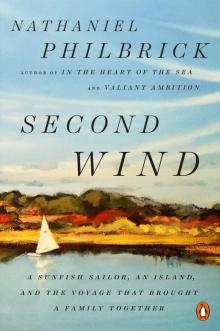 Second Wind: A Nantucket Sailor's Odyssey
Second Wind: A Nantucket Sailor's Odyssey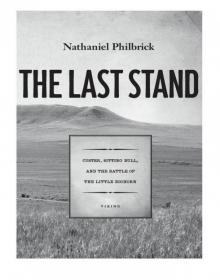 The Last Stand: Custer, Sitting Bull, and the Battle of the Little Bighorn
The Last Stand: Custer, Sitting Bull, and the Battle of the Little Bighorn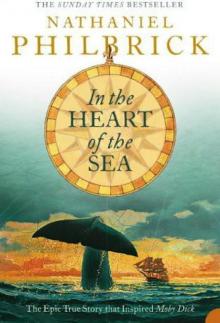 In the Heart of the Sea: The Epic True Story That Inspired Moby-Dick
In the Heart of the Sea: The Epic True Story That Inspired Moby-Dick Away Off Shore: Nantucket Island and Its People, 1602-1890
Away Off Shore: Nantucket Island and Its People, 1602-1890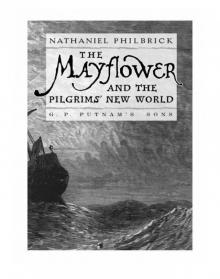 The Mayflower and the Pilgrims' New World
The Mayflower and the Pilgrims' New World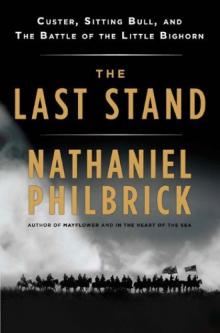 The Last Stand: Custer, Sitting Bull and the Battle of the Little Big Horn
The Last Stand: Custer, Sitting Bull and the Battle of the Little Big Horn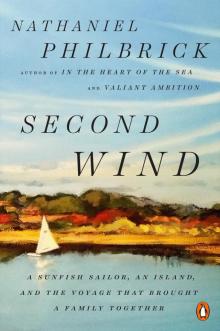 Second Wind
Second Wind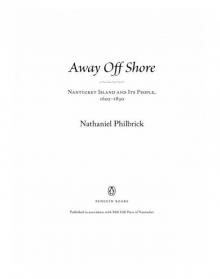 Away Off Shore
Away Off Shore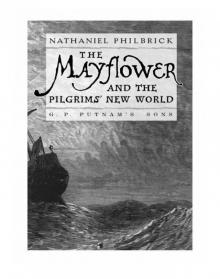 The Mayflower and the Pilgrims' New World*
The Mayflower and the Pilgrims' New World*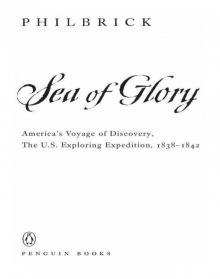 Sea of Glory
Sea of Glory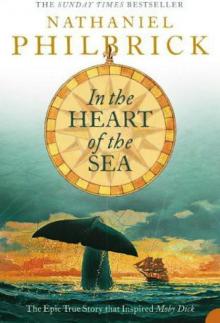 In the Heart of the Sea
In the Heart of the Sea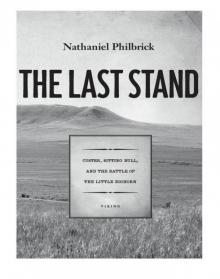 The Last Stand
The Last Stand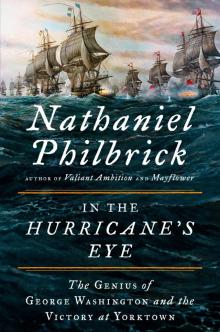 In the Hurricane's Eye
In the Hurricane's Eye